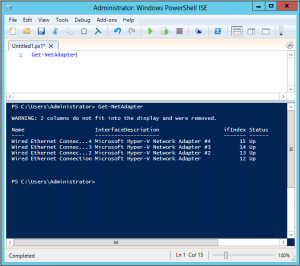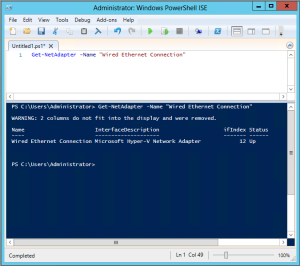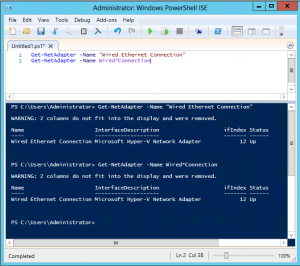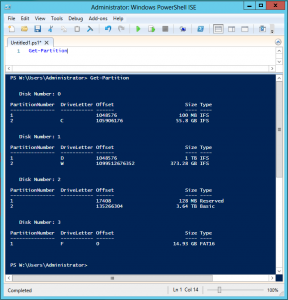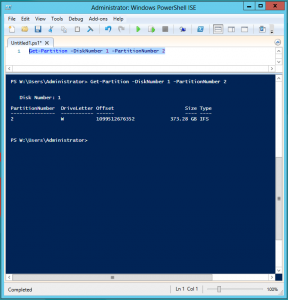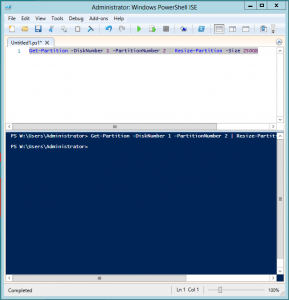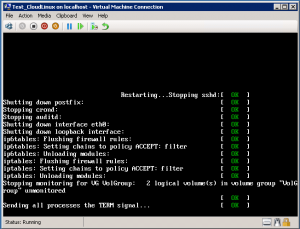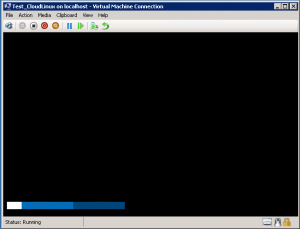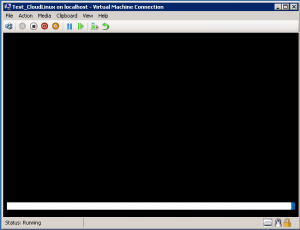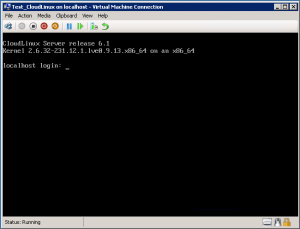
Categories

Sponsors


Archive
 Blogroll 
Badges


Community

|
Posted in Virtual Machine Manager, Windows Powershell | No Comment | 3,450 views | 11/04/2012 20:41
Merhaba, Çözümpark üzerinden yayınladığım yeni sunumumda kullanacağım komutları ve slaytı aşağıda bulabilirsiniz. Download: Powershell v3 ile Hyper-V Yonetimi
ReFS üzerinde yeni sanal sunucu yaratma:
Yarattığımız bu sunucunun detaylı özelliklerini görme:
Sanal sunucunun isminde wildcard kullanabilirsiniz. Örneğin:
Posted in Virtual Machine Manager, Windows Powershell | No Comment | 5,555 views | 19/03/2012 21:12
Hello, Info: SetLinuxVM now supports Hyper-V v3 and SCVMM 2012 SP1 as well!
After number of bug fixes, improvements and new functionalities, Set-LinuxVM reached to version 3.1 stable. Fixed bugs: New functionalities: General functionalities: Copyright (C) 2012 Yusuf Ozturk
This program is free software; you can redistribute it and/or modify it under the terms of the GNU General Public License as published by the Free Software Foundation; either version 2 of the License, or (at your option) any later version. This program is distributed in the hope that it will be useful, but WITHOUT ANY WARRANTY; without even the implied warranty of MERCHANTABILITY or FITNESS FOR A PARTICULAR PURPOSE. See the GNU General Public License for more details. You should have received a copy of the GNU General Public License along with this program; if not, write to the Free Software Foundation, Inc., 59 Temple Place, Suite 330, Boston, MA 02111-1307 USA Download: Donate: Thanks to support this open source project! Usage: 1. First, you should allow signed Powershell scripts:
2. Extract file and move “SetLinuxVM” directory under to “C:\Windows\System32\WindowsPowerShell\v1.0\Modules”. 3. Import as a module:
4. That’s it. To see how to use it:
5. Follow to instructions. You can search in my blog for how to create Linux VM templates!
Posted in Windows Powershell | 1 Comment | 5,198 views | 06/03/2012 22:21
In this post, I’ll talk about network operations on Windows Server 8 Beta. I have a virtual machine on my Hyper-V server with 4 virtual network adapter. They are all binded to same network, so I can set same ip addresses on them and I’m also able to make them teamed. 1. First of all, lets get network adapters.
I see all network adapters with some informations like name, description, ifindex and status. 2. I’ll get one of them and see full details.
Btw, you can also use wildcard (*) in your commands to make them easy.
As you see, both of them works as we expected.
Posted in Windows Powershell | 1 Comment | 3,104 views | 05/03/2012 02:16
You may not use Microsoft WebMatrix 2 Beta if your region format is not English. In that case you will probably see “index was outside the bounds of the array” when you try to edit files. I wrote a quick workaround in Powershell to solve this problem.
You should use this script to start WebMatrix 2 Beta. You can change shortcut path to execute this script as well. Applied to: PowerShell v2, PowerShell v3
Posted in Windows Powershell, Windows Server | No Comment | 7,767 views | 05/03/2012 00:44
In this post, I’ll talk about disk operations on Windows Server 8 Beta. I have Windows 7 and Windows Server 8 Beta on a PC and I want to install Windows 8 Beta as well. I will resize my current Windows Server 8 partition and create a new partition for Windows 8 Beta. When I want to do this operation via Server Manager GUI (in case of you have Server 8 with GUI), I don’t see any option for “Shrink”. Maybe I’m looking to wrong section but here it is: So lets do this operation via Powershell. 1. First of all lets get partition information.
2. My drive letter is W. So I can get detailed information.
3. Drive size is 373 Gb. I’ll resize it to 250 Gb.
Posted in Windows Powershell | No Comment | 3,013 views | 17/02/2012 07:38
As you may know, I’ve recently published new version of SetLinuxVM. It’s currently in version 3. There are many great improvements but specificly I want to talk about Wait-VMReboot and Wait-VMProcess. The biggest challenge in SetLinuxVM v2 was reboot process. There was a static time wait to cover reboot and service restart scenarios. But reboot and service restart duration may differ and depends on Distro, kernel and workloads on VM. If SetLinuxVM sends a command while Linux VM is rebooting, that command will probably fail. So SetLinuxVM should wait enough to Linux VM gets ready to login screen. But that wait has very big impact on provisioning duration. So what SetLinuxVM v3 is doing? It does same thing as human eyes. Actually we are watching VM reboot process and if we see login screen, then we type our root username and password. So I did same process on SetLinuxVM. SetLinuxVM captures screen of Linux VM every 10 seconds and checks differences between two capture. So let’s give an example for this process. 1. I send a reboot signal to Linux VM. 2. I capture my first screenshot. VM is at the beginnnig of reboot process.
3. After 10 seconds, I capture another screenshot, almost at the end of procces.
4. If I check State1 and State2, Powershell tells me that they are not same. So after 10 seconds I capture another screenshot.
5. I capture a new screenshot after 10 seconds.
6. If I check State1 and State2, Powershell tells me that they are identical! So that means VM is finished reboot process or stucked in somewhere. Due to eliminate stucked situations, I do this verification twice. After second verification, if State1 and State2 is idential then SetLinuxVM says that VM is fully rebooted. But that’s just an assume. VM may be stucked forever in reboot process but there is nothing SetLinuxVM can do. You should fix that as a System Administrator. You can use Wait-VMReboot like this:
I hope you like it! Thanks for reading..
Posted in Windows Powershell | No Comment | 5,225 views | 14/02/2012 02:14
Hello, Info: SetLinuxVM is now under GPLv2
After number of bug fixes, improvements and new functionalities, Set-LinuxVM reached version 3.0 stable. Fixed bugs: New functionalities: Removed Functionalities: General functionalities: Copyright (C) 2012 Yusuf Ozturk
This program is free software; you can redistribute it and/or modify it under the terms of the GNU General Public License as published by the Free Software Foundation; either version 2 of the License, or (at your option) any later version. This program is distributed in the hope that it will be useful, but WITHOUT ANY WARRANTY; without even the implied warranty of MERCHANTABILITY or FITNESS FOR A PARTICULAR PURPOSE. See the GNU General Public License for more details. You should have received a copy of the GNU General Public License along with this program; if not, write to the Free Software Foundation, Inc., 59 Temple Place, Suite 330, Boston, MA 02111-1307 USA Download: Donate: Thanks to support this open source project! Usage: 1. First, you should allow signed Powershell scripts:
2. Extract file and move “SetLinuxVM” directory under to “C:\Windows\System32\WindowsPowerShell\v1.0\Modules”. 3. Import as a module:
4. That’s it. To see how to use it:
5. Follow to instructions. You can search in my blog for how to create Linux VM templates! |











